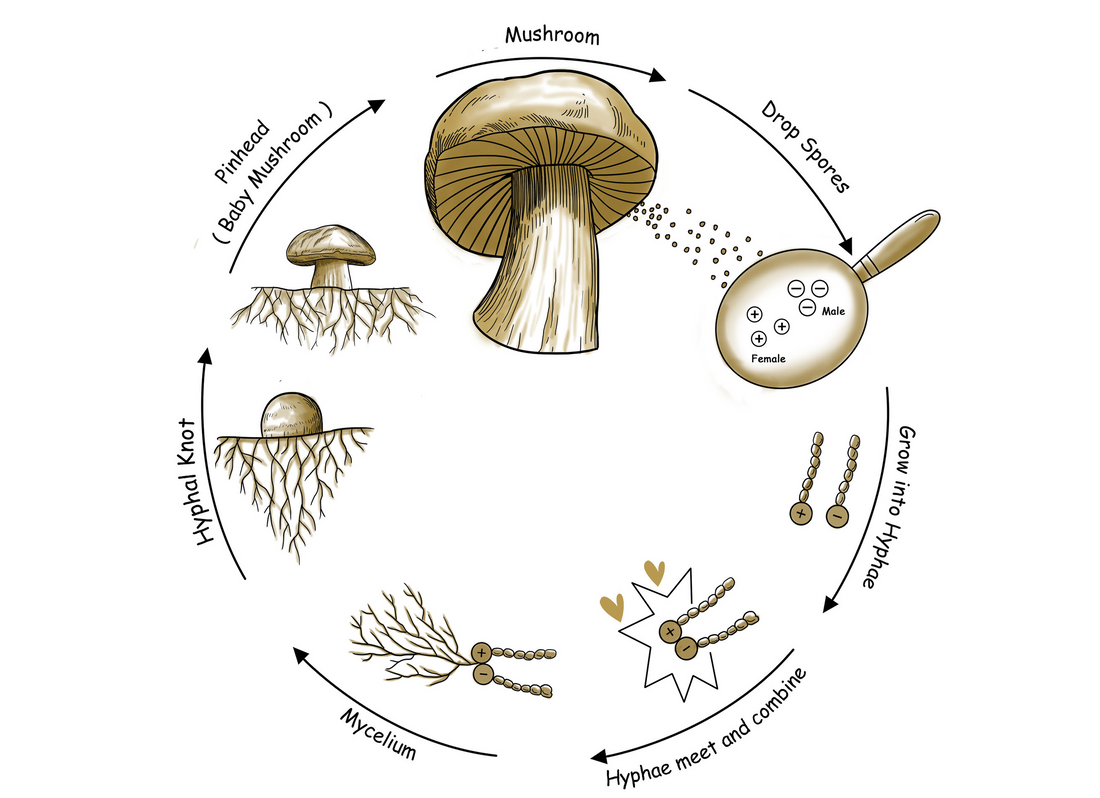Mushroom Life Cycle
The mushroom life cycle is truly fascinating! Whether you're observing the growth of small mushrooms, which can sprout in just a day, or marveling at the development of larger mushrooms over the course of 3-4 days, there's something mesmerizing about watching these fungi thrive.
But for mushrooms to reach their full potential, the environment must be conducive to their growth. Steady moisture is key for the mushroom life cycle to unfold.
- What is a Mushroom?
Mushrooms are a type of fungus, not plants. To get more specific, mushrooms are like the ‘fruit’ of fungi. Similar to how a tree produces fruits, the fungi produce mushrooms. One difference is that mushrooms don’t only grow in the ground, mushrooms can also grow on trees and in controlled environments.
- Dropping Spores
Mushrooms produce and release spores from the gills that are located underneath the mushroom cap. Spores are produced as either male or female. Each mushroom is capable of producing hundreds of thousands of spores that can travel beyond the limits of the parent mushroom; as we all know mushrooms are rooted, so they can’t travel anywhere at all.
- Growing into Hyphae
Think of each spore as a single cell. Each of those cells is either male or female that ultimately group up with other spores to create male and female hyphae.
Hyphae are groups of the same spore. When the hyphae of one spore meet the hyphae of another spore, they meet and combine to being the process of producing mycelium.
- Mycelium
This is part of the mushroom life cycle that we actually get to see take form. It’s not difficult to understand what mycelium is and does. Just think of mycelium as the roots of a plant.
For the mushroom, mycelium is the web-like root system that remains rooted to the ground, yet, is capable of branching out. This web-like system provides a stable and nutritious area for the fungi to start producing mushrooms.

Comments
Post a Comment